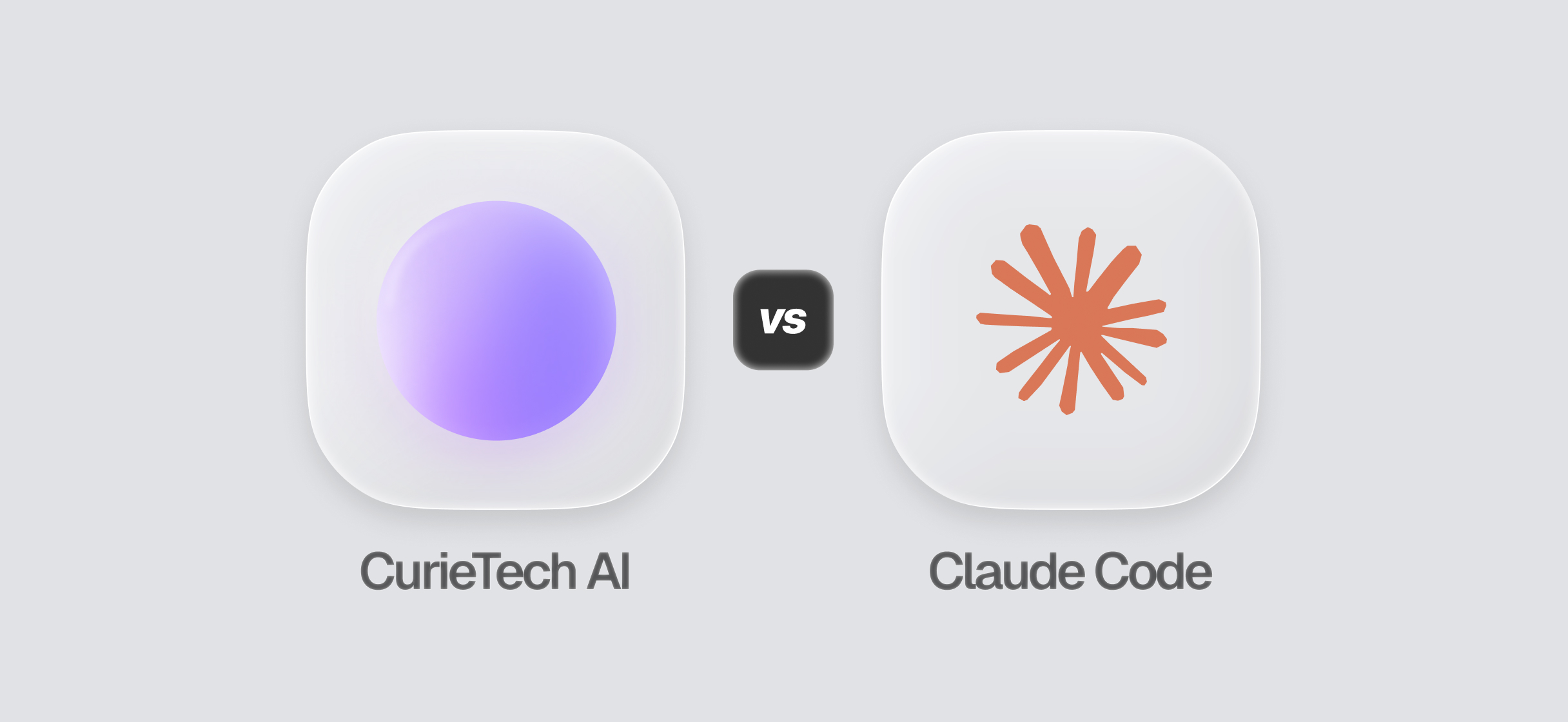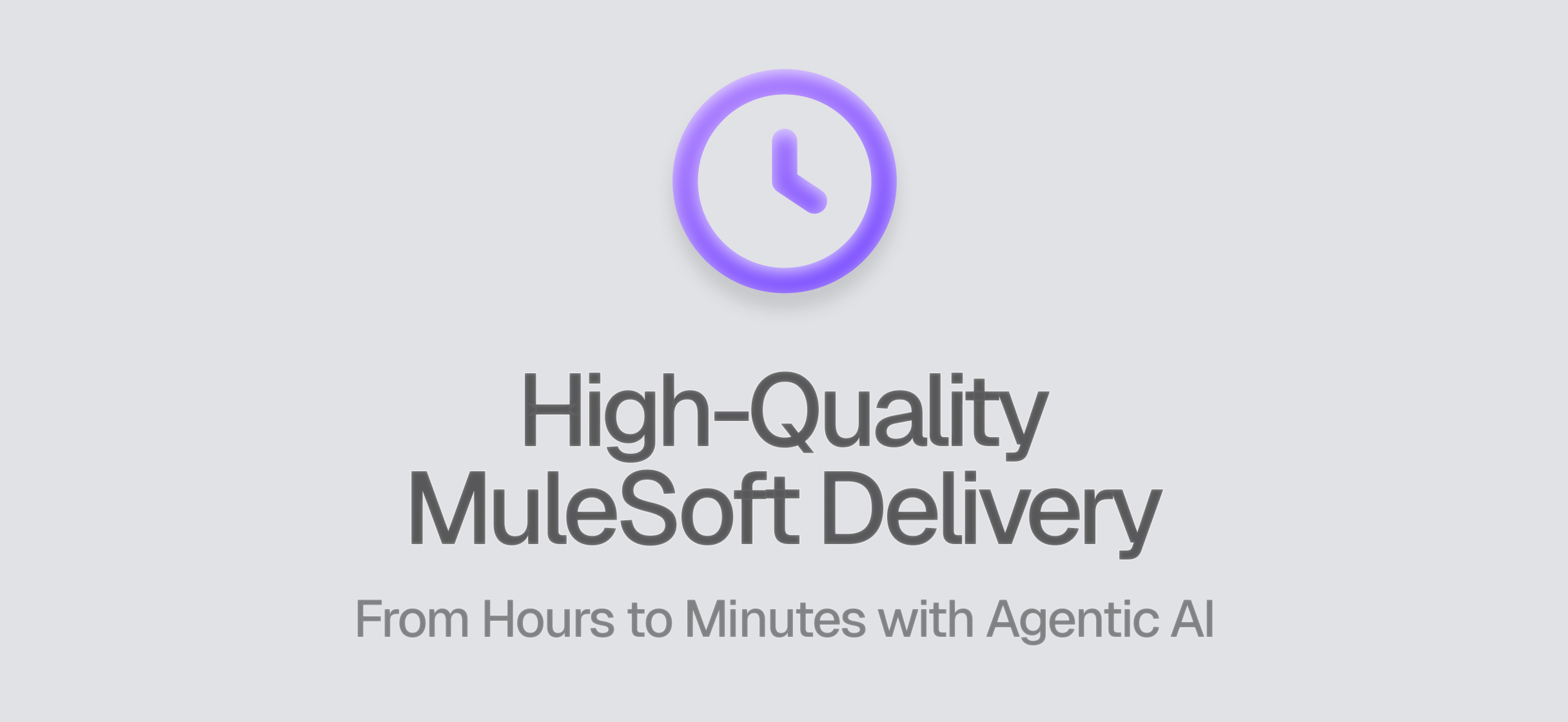A Smarter Way to Build, Publish, and Deploy APIs
MuleSoft’s Anypoint Exchange has always been at the heart of API-led connectivity. It’s where teams design, share, and reuse APIs and assets across their organization — the foundation of collaboration and consistency in the MuleSoft ecosystem.
Now, with CurieTech AI’s new integration with Anypoint Exchange, that experience becomes even more powerful. Developers can now manage their entire MuleSoft workflow — from designing APIs to deploying applications — simply by interacting with CurieTech AI.
Why the Exchange Integration Matters
CurieTech AI has already been transforming how MuleSoft developers work. It helps design APIs, generate Mule flows, handle DataWeave transformations, deploy to CloudHub, and even fetch logs — all through natural language.
The new Exchange integration takes this even further. CurieTech AI can now connect directly to your Anypoint Exchange account to create, publish, and fetch API specifications, generate Mule projects from those specs, deploy them to CloudHub, and monitor the deployed applications.
This means no more switching between multiple tools like Design Center, Exchange, or Runtime Manager. Everything happens in one place — naturally, conversationally, and intelligently.
A Real Use Case: From Design to Deployment in One Flow
Imagine you’re starting your day with an idea for an Inventory API. You ask CurieTech AI:
“Create a basic RAML specification for an Inventory API with endpoints to list, add, update, and delete items.”
In seconds, CurieTech AI generates a valid RAML 1.0 specification, complete with types and examples.
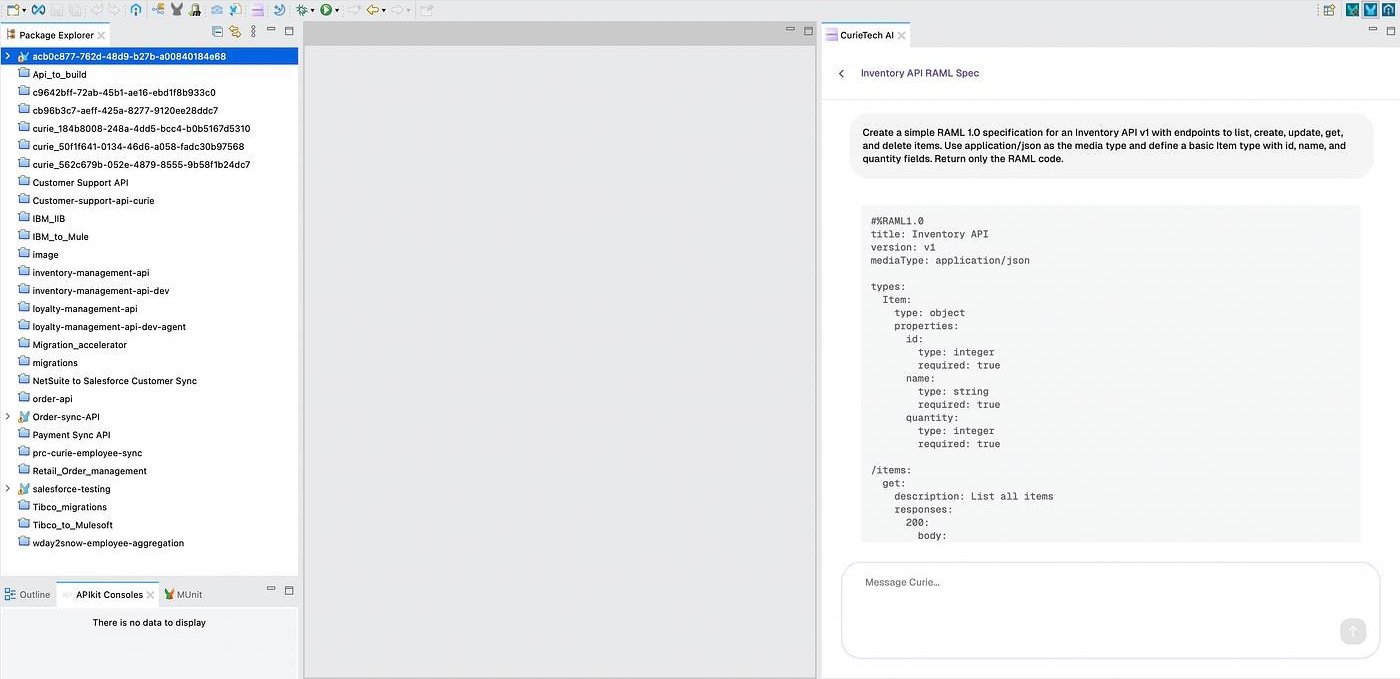
Once the spec is ready, you ask CurieTech AI to publish it to Exchange. The agent takes care of everything — authentication, organization details, and version management — and your API specification is live on Anypoint Exchange in moments.
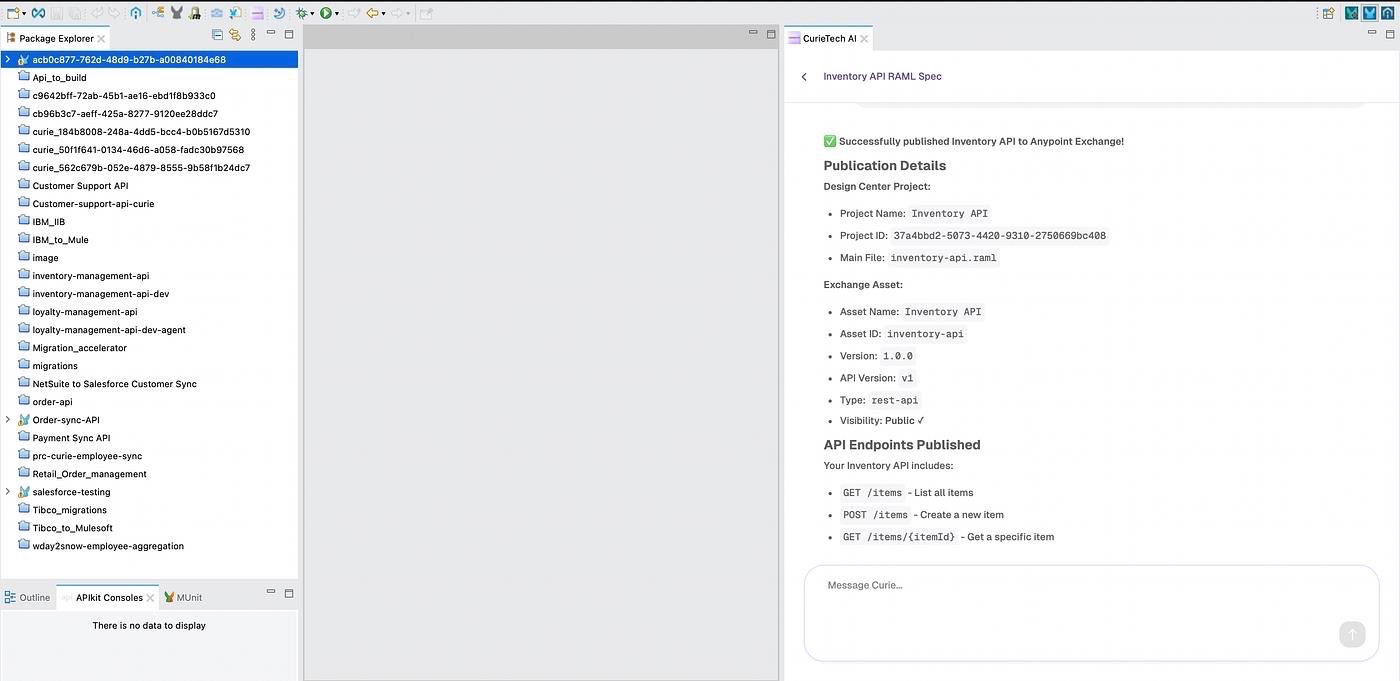

CurieTech AI can then fetch that same API specification from Exchange, retrieving all the associated details and verifying that the asset is accessible and ready for implementation.

From there, you can ask CurieTech AI to generate a Mule 4 project from the API. The generated project automatically includes flows for your endpoints — for instance, the POST /items flow assigns a unique ID to each new item and stores it in a local JSON file, while the GET /items flow reads and returns all items from that file.
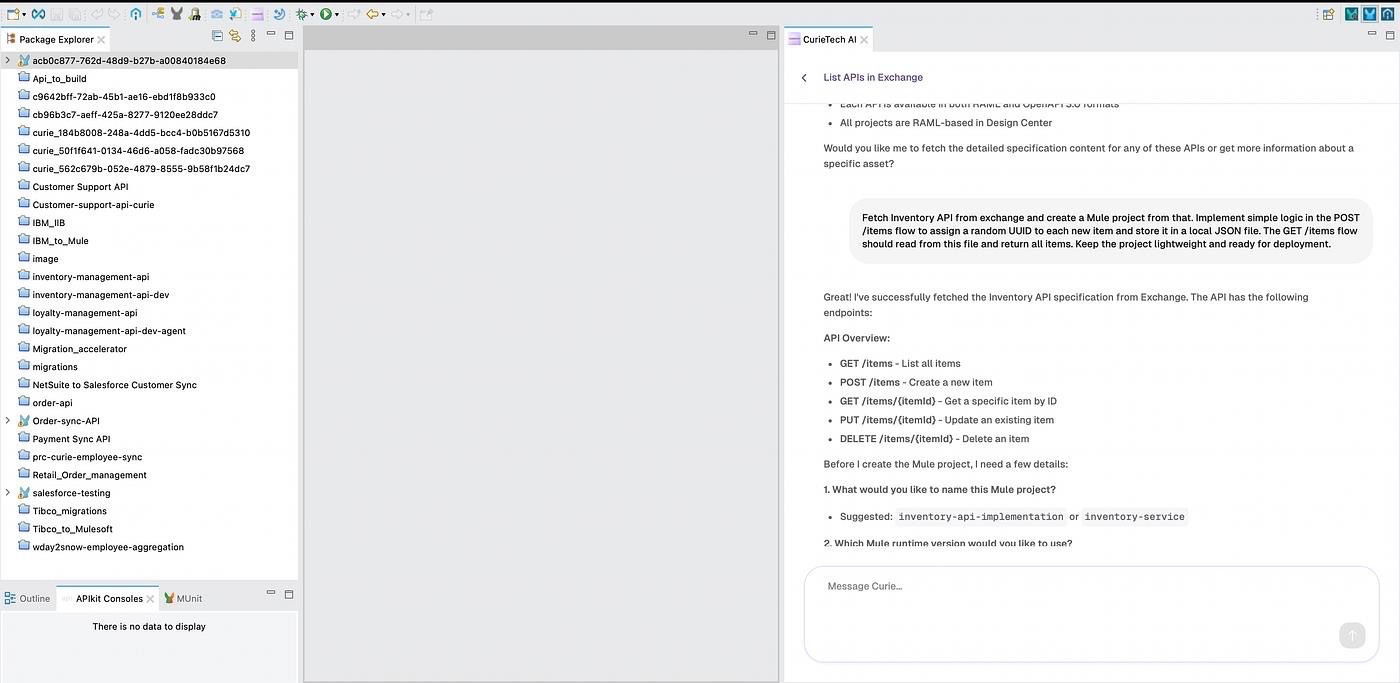
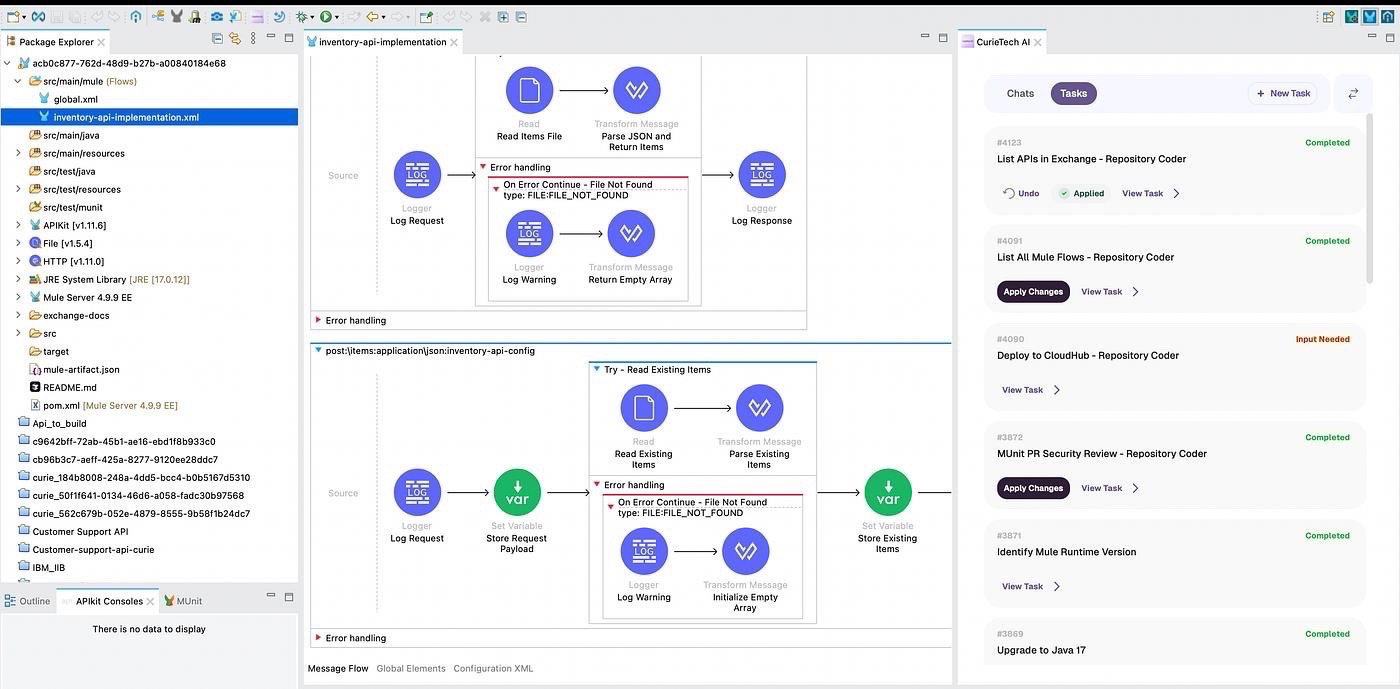
Once ready, you can ask CurieTech AI to deploy the application to CloudHub. It handles the deployment end-to-end using your configured Anypoint credentials. Within seconds, your API is live and ready to be consumed.

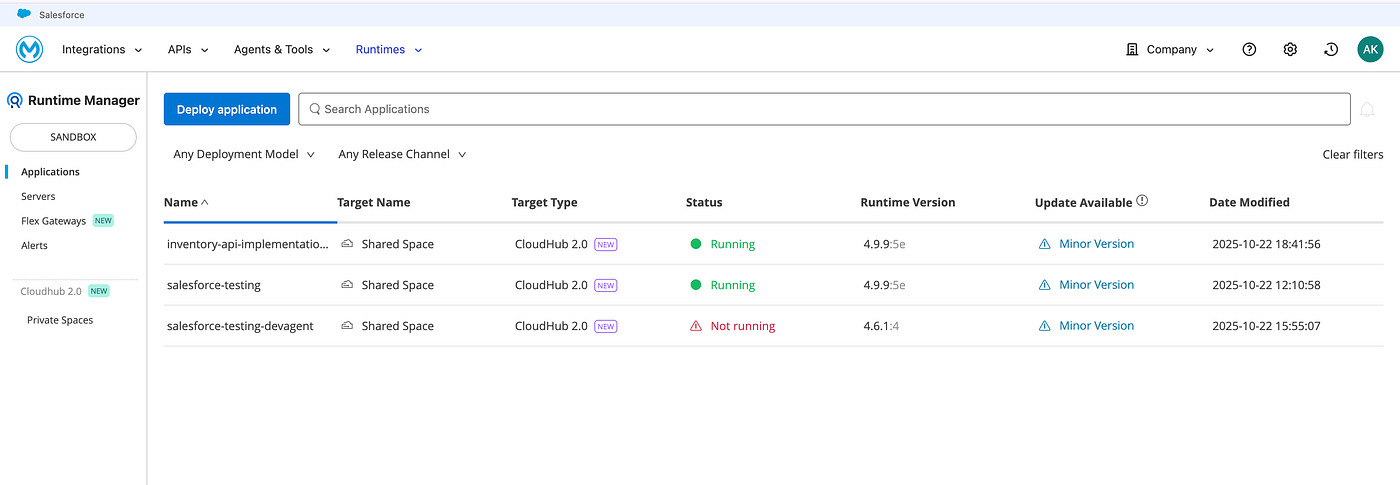
Finally, CurieTech AI can fetch logs from the deployed application, showing real-time insights directly within the chat. You can monitor and troubleshoot your deployment without ever switching to Runtime Manager.
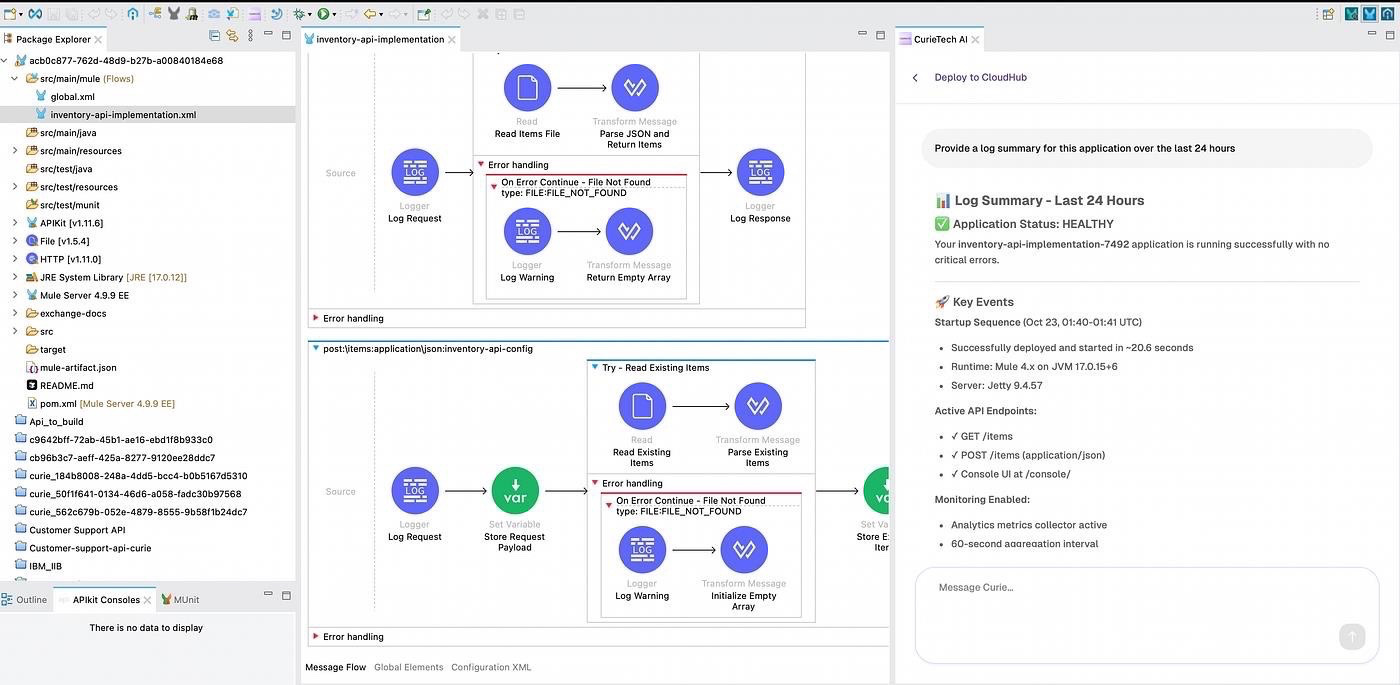
This example captures just one end-to-end flow — from idea to deployment — but CurieTech AI can do much more. It supports dozens of other Exchange and platform operations, from listing assets and managing versions to analyzing metrics, managing APIs, and even automating runtime tasks.
Why This Changes the Game
This flow shows how the CurieTech AI + Anypoint Exchange integration is changing the developer experience. It’s not just automating steps — it’s creating a smarter, more connected workflow that mirrors how developers actually think and work.
CurieTech AI eliminates repetitive setup and tool-hopping. Developers can move from concept to live application in minutes, keeping their focus on design and logic rather than managing environments or configurations.
For organizations, it means faster delivery, better consistency, and less overhead — all powered by conversational intelligence.
The Future of MuleSoft Development
The integration between CurieTech AI and Anypoint Exchange represents a major milestone for intelligent MuleSoft development. It unites design, implementation, and deployment into a single, conversational experience.
CurieTech AI isn’t just a helper anymore — it’s an intelligent agentic Developer that understands context, automates complexity, and accelerates delivery.
This is the future of API development — faster, smarter, and more connected than ever before.



.jpg)
